Crab farming is a common practice in the Philippines. It is an industry that provides many Filipinos with a livelihood. Crab farming is generally considered to be environmentally friendly. Crab farms can help to improve water quality and provide habitat for other wildlife.
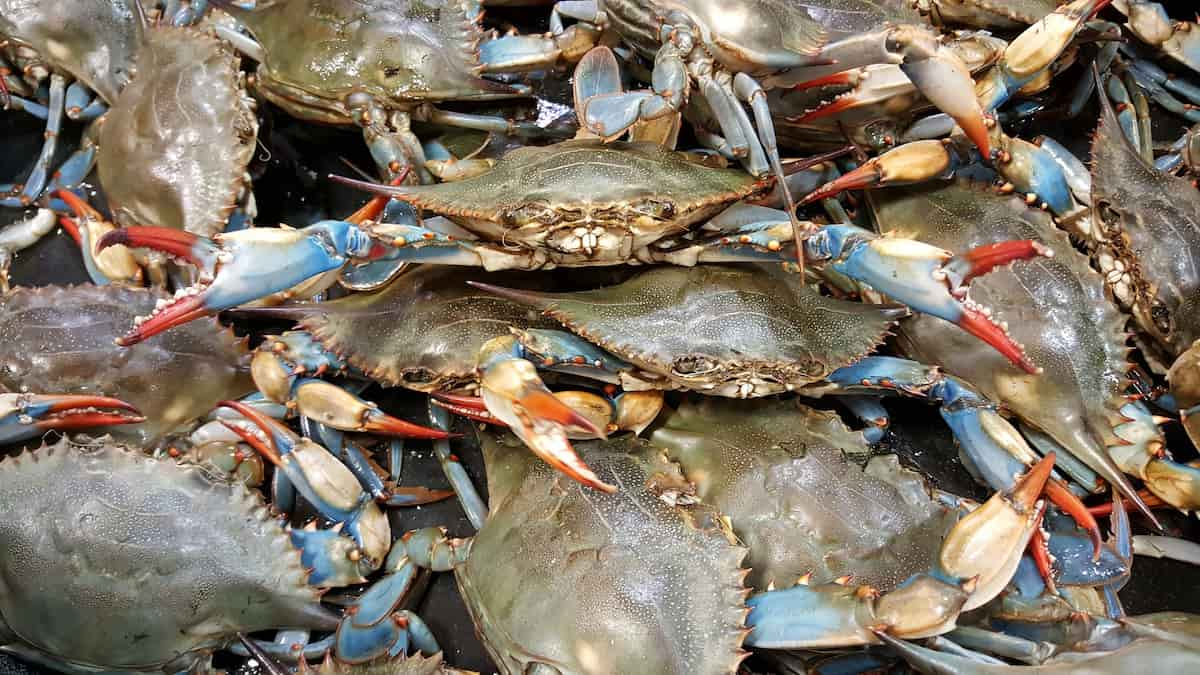
How to start a crab farming in the Philippines
Crab farming importance in the Philippines
Crab farming is important in the Philippines for several reasons. First, crab is a popular seafood dish in the country and is in high demand. Second, crab farming can be done in various locations, including in brackish water areas near the coast, which are abundant in the Philippines. Finally, crab farming provides employment opportunities for many people in the Philippines, particularly in rural areas.
The history of crab farming in the Philippines
Crab farming in the Philippines has a long and storied history. The country has been home to crab farms for centuries, and the industry has an important role in the economy. In recent years, however, the industry has begun to decline.
In the early days of crab farming in the Philippines, farmers would catch wild crabs and then keep them in cages or pens made of bamboo. This method was not very efficient, as many of the crabs would escape or be eaten by predators. As the demand for crab meat grew, farmers began to look for more efficient ways to raise crabs.
Is indoor crab farming profitable?
While there are many potential benefits to indoor crab farming – including year-round production, lower costs, and less impact on the environment – the profitability of this type of operation depends on several factors. These include the initial investment cost, market price for crabmeat, and yield per square meter.
The initial investment cost is the main problem to entry for many small-scale farmers. Indoor crab farms require specialized equipment and facilities, which can be expensive to construct and maintain. In addition, market prices for crabmeat can fluctuate greatly, making it difficult to predict profitability.
How big of a tank does a crab need in the Philippines?
The minimum tank size for a crab in the Philippines is 50 liters, but we recommend at least 100 liters. If you start to keep more than one crab, you will need an even larger tank.
Freshwater crab farming in the Philippines
- Several freshwater crab species are native to the Philippines, making it an ideal location for crab farming. The blue swimmer crab is the most common species of freshwater crab farming in the Philippines.
- Crab farming in the Philippines is typically done in ponds or cages. Ponds are usually constructed using concrete or earthen walls with a water depth of 1-2 meters. Cages are made from wire mesh and typically have a volume of about 1 cubic meter.
- The crabs are fed a diet of pellets, vegetables, and fruits. The diet should be varied to ensure the crabs receive all the necessary nutrients.
- To harvest the crabs, the farmers will drain the pond or cage and collect the crabs by hand. The crabs are sorted by size and sold live to markets or restaurants.
In case you missed it: Sheep Farming in Philippines: How to Start, Breeds, Production, and Management
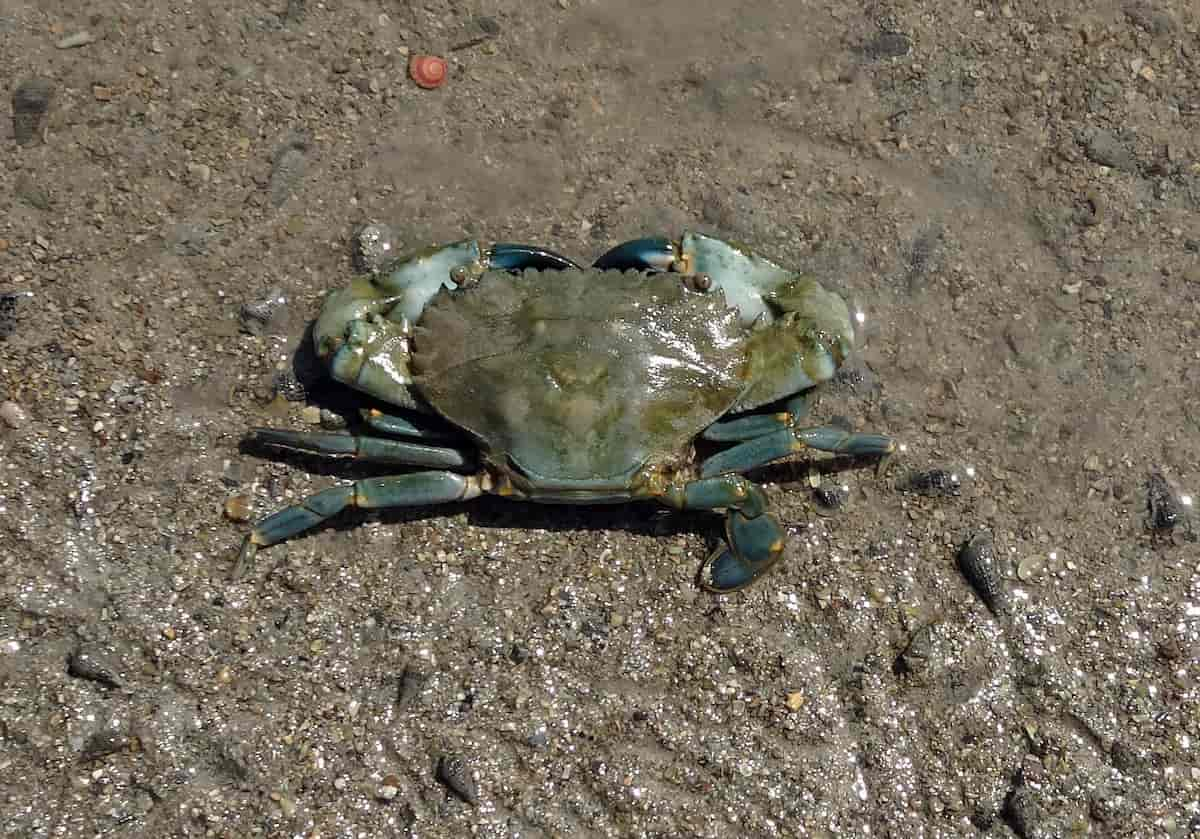
How to start a crab farming business in the Philippines?
Crab farming is not a new business venture in the Philippines. It has been for several years and is a popular livelihood for many Filipinos. The country has an ideal climate and environment for crab farming, making it a viable option for those looking to start their business. Before starting a crab farm in the Philippines, there are a few things to consider. The first is the type of crabs you want to farm.
Several species of crabs are farmed in the Philippines, each with its requirements. Do your research and choose the species that best suits your needs and resources. Once you have chosen the type of crab you want to farm, acquiring some juvenile crabs is next. This can be done by buying them from a hatchery or collecting them from the wild. If you collect them from the wild, get permission from the relevant authorities first.
Once you have your juvenile crabs, it’s time to set up your crab farm. You will need ponds or tanks to house your crabs and filtration and aeration systems to keep the water clean and oxygenated. The size and number of ponds or tanks will depend on the number of crabs you plan to raise. Crabs need a steady food supply, so you must set up a feeding system. This can be done using commercial feeds or growing crops to feed your crabs.
Steps to start a crab farm in the Philippines
- Decide on the type of crab farm you want to start. There are three main crab farms in the Philippines: mangrove, freshwater, and marine. Each has its unique benefits and challenges.
- Choose a location for your crab farm. The location you choose will need access to the type of water your chosen crabs require and enough land to build the necessary infrastructure.
- Obtain the necessary permits and licenses from the local government. To operate a crab farm in the Philippines, you must obtain several permits and licenses from the Department of Agriculture and other relevant government agencies.
- Build the necessary infrastructure for your crab farm. This will include ponds or tanks for housing your crabs and filtration and aeration systems to keep the water clean and oxygenated.
- Stock your crab farm with crabs. You can buy juvenile crabs from a commercial supplier or catch them in the wild (with a permit).
- Care for your crabs and monitor their growth. This will involve regular feeding, cleaning out tanks, and monitoring water quality parameters such as temperature, pH, and dissolved oxygen levels.
- Harvest your crabs when they reach maturity (around 8-12 months). This can be done by hand-catching them or using nets, depending on the size of your operation.
Advantages of crab farming in the Philippines
- Firstly, it is a relatively low-cost way to produce seafood.
- Second, crab farming can provide employment and income for small-scale farmers and fishers.
- Third, crab farming can help to conserve wild crab populations by providing a source of crabs for the live animal trade.
- Finally, crab farming can provide an important food source for local communities.
Are crabs profitable in the Philippines?
Yes, crabs are profitable in the Philippines. The average farm produces about 1,500 kg of crabmeat per year, worth approximately PHP 150,000 (US$ 3,000). Several factors make crab farming in the Philippines attractive to investors:
Low start-up costs
All you need is a small piece of land, some basic equipment, and a few thousand baby crabs.
High demand
Crab is a popular seafood dish in the Philippines, and there is always a ready market for it.
Short growing cycle
Crabs mature quickly and can be harvested after 6-8 months. Farmers can turn over their investments quickly and enjoy a good return.
Types of crabs in the Philippines
| Green Crab | Fiddler Crab |
| Brown Crab | Ghost Crab |
| Blue Crab | Orange-Clawed Crab |
| Mud Crab |
In case you missed it: Poultry Farming in the Philippines: How to Start, Breeds, Subsidy, Loans, and Profits
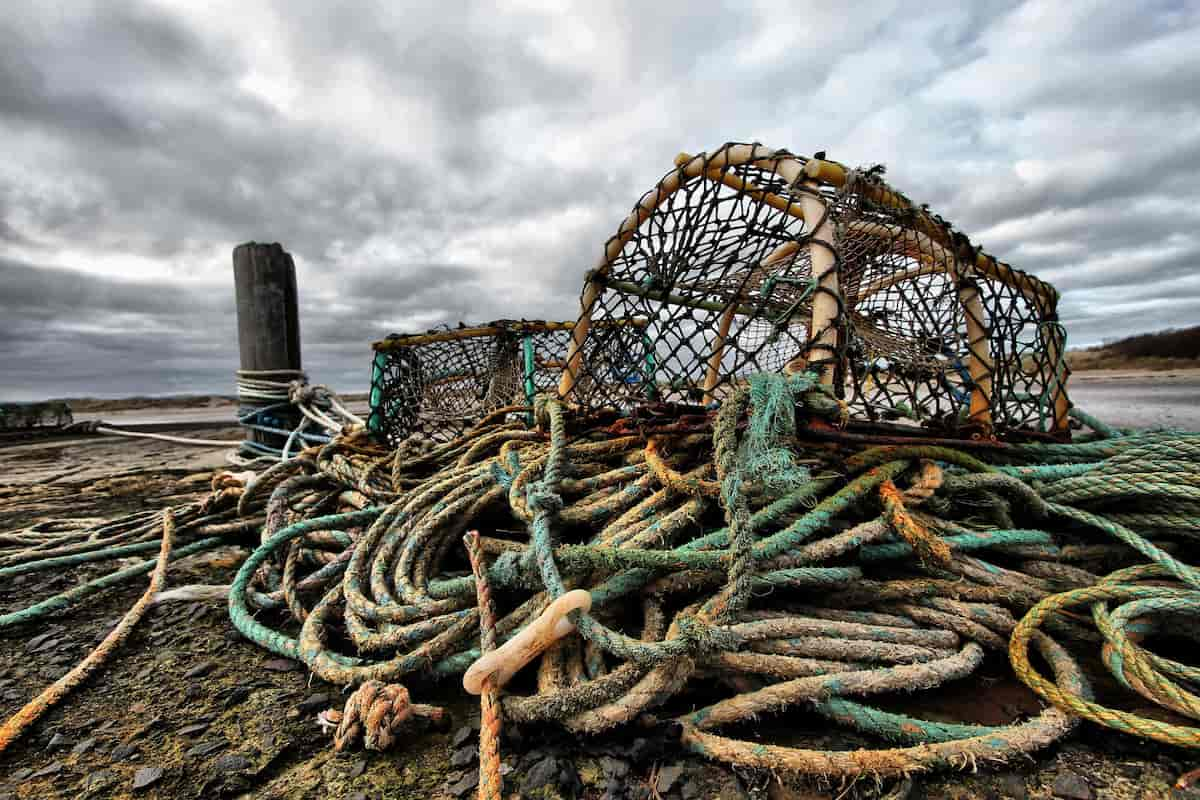
Site selection for crab farming in the Philippines
Site selection is an important aspect of crab farming in the Philippines. Below are some factors important when choosing a site for your crab farm:
Proximity to markets
You will need to be able to transport your crabs to market quickly and efficiently.
Proximity to suppliers
You will need to be able to source supplies (e.g., feed, bait, etc.) easily and quickly.
Water quality
The water quality at your chosen site should be suitable for crab farming. Test the water for pH, dissolved oxygen, temperature, and salinity levels.
Soil quality
The soil at your chosen site should be of good quality and free of toxins or other contaminants. Conduct a soil test to check for pH, nutrient levels, and moisture content.
Cage culture for crab farming in the Philippines
Cage culture is one of the most popular methods of crab farming in the Philippines. It is a simple and efficient way to rear crabs in a controlled environment. Cages are made from wire mesh or plastic and are placed in ponds or lakes. Crabs are then caught and placed into cages, where they will be safe from predators and can grow to maturity.
Cage culture has many benefits for crab farmers. It allows farmers to control the environment in which their crabs grow, meaning that they can ensure optimal conditions for growth and survival. Additionally, it minimizes the risk of disease transmission, as crabs in cages cannot come into contact with wild animals or other potential sources of infection.
Managing the crab farm in the Philippines
The crab farm in the Philippines is a large commercial operation that employs several workers to care for the crabs. The farm is located in an area with a tropical climate and a warm, humid environment. The crabs are kept in large tanks or ponds and are fed a diet of pellets, fish, and other seafood. The farm also sells live crabs to customers.
The crab farm in the Philippines is managed by a team of workers responsible for caring for the crabs. The team includes a manager who oversees the operation of the farm; a veterinarian who monitors the health of the crabs; and workers who feed and clean the tanks or ponds. The team also works with local authorities to ensure that the crab farm complies with all regulations.
In case you missed it: Hydroponic Farming in the Philippines: How to Start, Cost, Profit, Crops, and Requirements
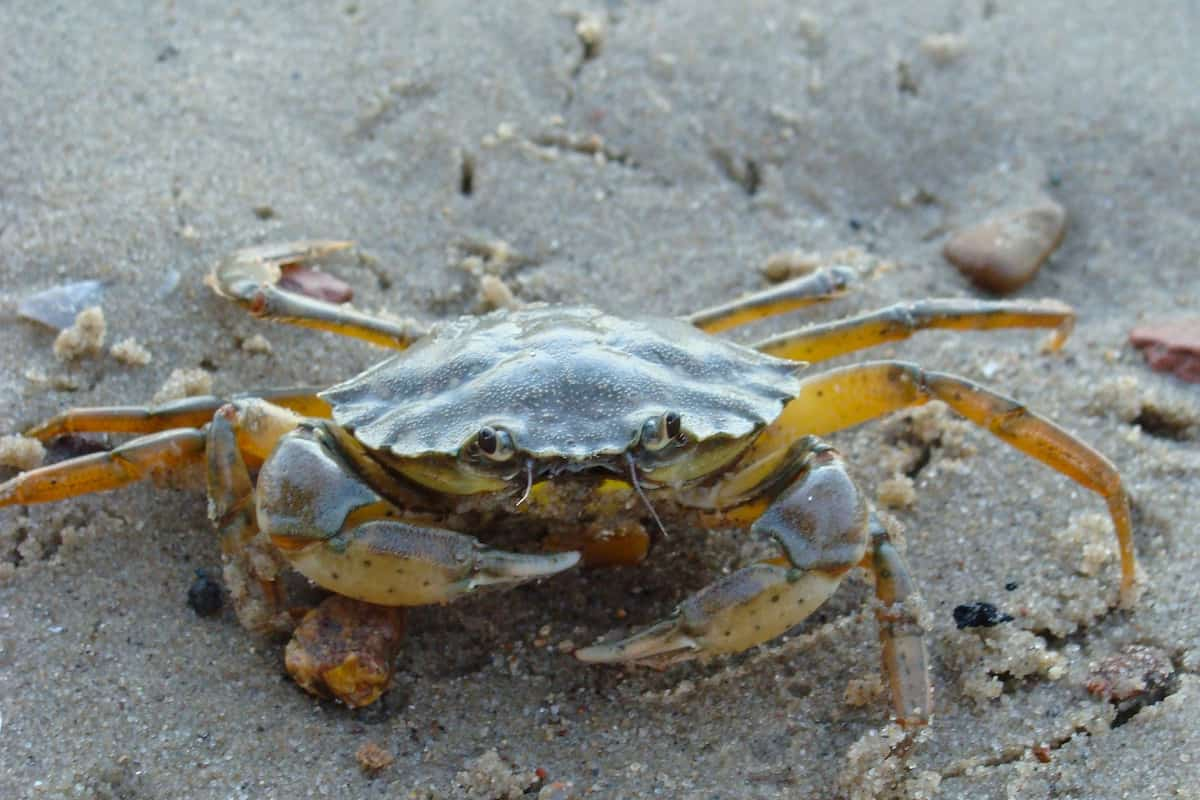
Select crab farming methods in the Philippines
- Pond culture is the more traditional method of crab farming, where crabs are raised in ponds fed with fresh water from rivers or streams. This method is typically used for native species of crabs, such as the red swamp crab (Portunus pelagicus).
- Cage culture is a more intensive method of crab farming, where crabs are raised in cages suspended in bodies of water like lakes, estuaries, or coastal waters. This method is typically used for non-native species of crabs, such as the giant river crab (Hekt Crabra).
Water quality for crab farming in the Philippines
There are some points considered when it comes to water quality for crab farming in the Philippines. First, the water must be clean and free of pollution. Second, the water must have enough salinity to support crab growth. Third, the water temperature must be warm enough for crab development.
Assuming that all of these criteria are met, crab farmers in the Philippines still need to monitor water quality carefully. This is because crabs are very sensitive to environmental changes, and even small fluctuations can cause problems. For instance, if the oxygen level in the water drops too low, crabs will suffocate and die. Ammonia and other toxins can also kill crabs if they build up to high levels.
Feeding for crab farming in the Philippines
Feeding is the most important aspect of crab farming in the Philippines. Good quality feed will help the crabs grow quickly and remain healthy. There are several commercial feeds available, but making your own is possible. To make your feed, you must source high-quality ingredients such as shrimp meal, fish meal, and soybean meal.
You can also add vitamins and minerals to the mix to ensure the crabs get all the necessary nutrients. It is important to feed the crabs regularly, and they should always have access to fresh water. It is also important to monitor the water quality closely, as poor water quality can lead to health problems in crabs.
In case you missed it: How to Start Rabbit Farming in the Philippines: Business Plan, Profit, Subsidy, Loans, and Requirements
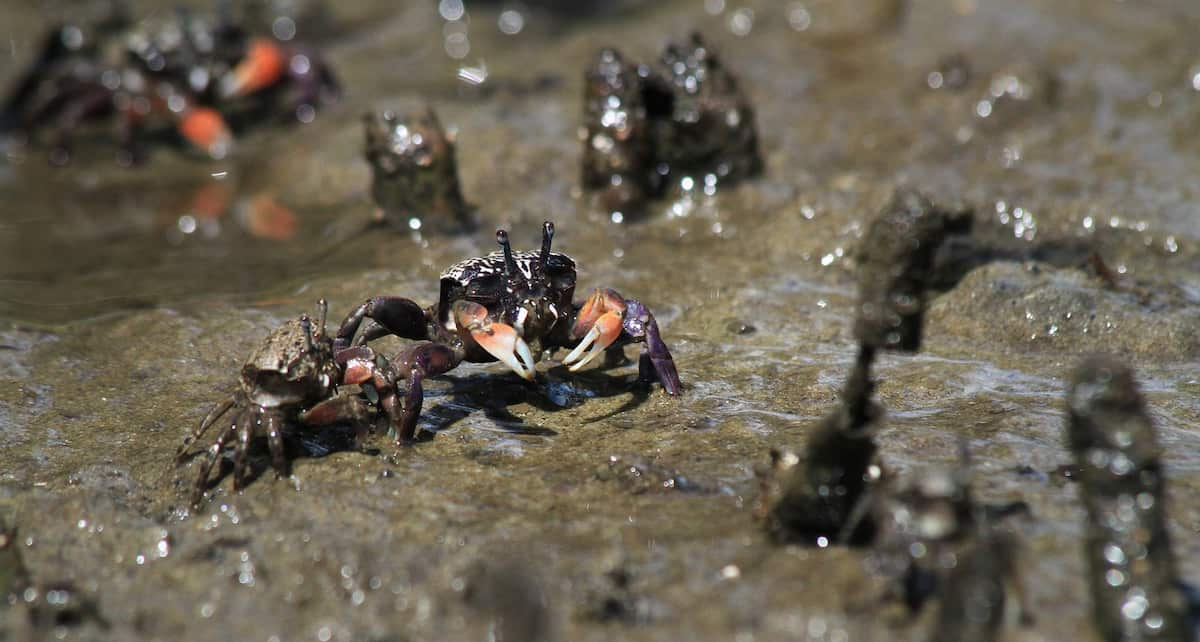
Status of the crab industry in the Philippines
The crab industry in the Philippines is in a good state. The country has a large area of mangrove forests, providing an ideal habitat for crabs. There are also many small, family-owned businesses involved in crab farming. This ensures a consistent supply of crabs for the domestic market. Recently, the Philippines has become a major exporter of live crabs. The demand for Philippine crabs has been growing steadily due to the excellent quality of the crabs. The Philippines is now one of the world’s top suppliers of live crabs.
Caring and other management tips for Crab farming in the Philippines
As with any farming, crab farming has challenges that must be managed to succeed. Below are some tips on how to care for your crabs and other important management considerations:
Housing
Crabs need a spacious and well-ventilated area. If you’re keeping them in an enclosed space, ensure there is plenty of air circulation, and the temperature is not too hot or cold.
Feeding
Crabs are omnivorous and will eat about anything, but they do have some specific nutritional needs. Make sure to provide them with a balanced diet of meat, vegetables, and grains.
Water
Crabs always need access to fresh, clean water. This can be achieved by providing them with a freshwater tank or regularly changing the water in their enclosure.
The future of crab farming in the Philippines
In the Philippines, crab farming is an important industry. It is one of the country’s leading export commodities. Crab farming in the Philippines has a long history and is undergoing a renaissance. Today, crab farming in the Philippines is booming. The Philippines has become one of the world’s top suppliers of crabs, exporting them to markets all over the globe. The future of crab farming in the Philippines looks bright, with continued growth expected in both production and exports.
In case you missed it: How to Start Banana Farming in the Philippines: Business Plan, Varieties, Requirements, and Profit
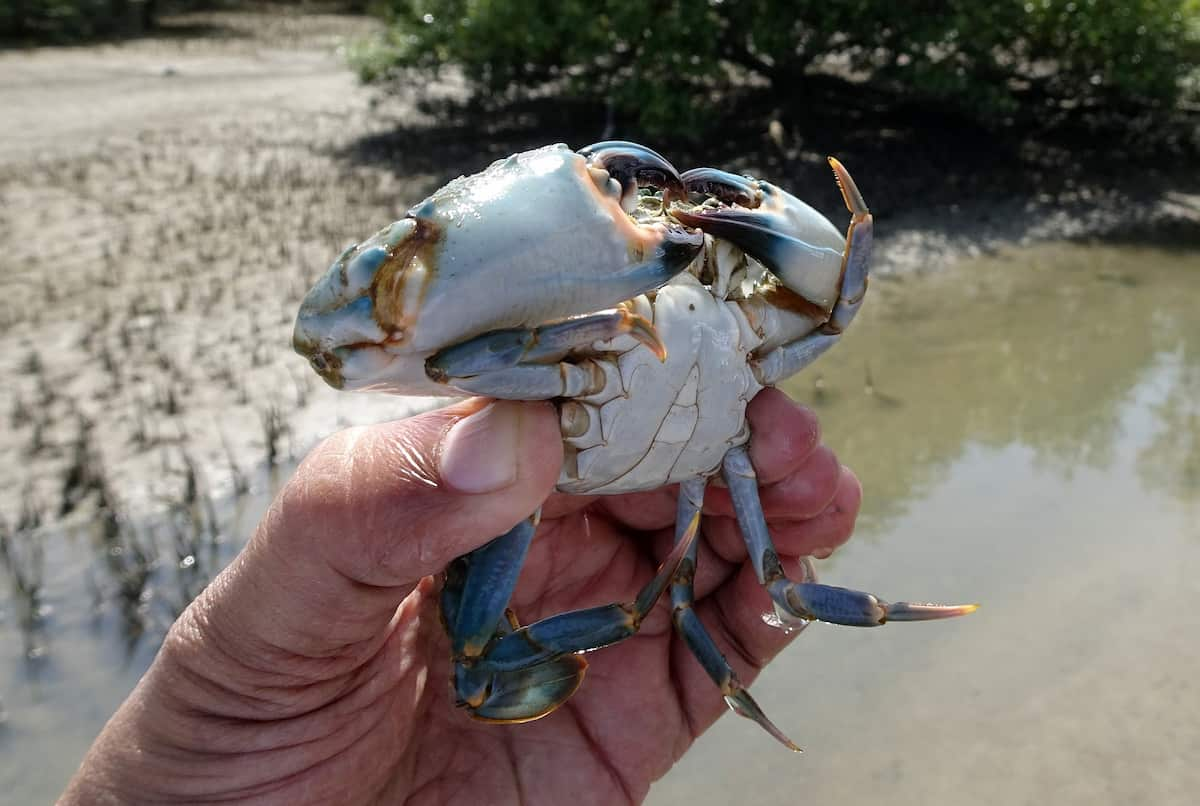
Challenges for crab farming in the Philippines
- One of the main challenges is the high cost of land. Crab farms require large amounts of space to accommodate all of the crabs. This can make it difficult to find affordable land to lease or purchase.
- Crabs are very sensitive creatures and require special care and attention. They must be kept in clean, warm water and fed a nutritious diet. This all comes at a cost, which can be prohibitive for many farmers.
- Another challenge is the tropical climate of the Philippines. The warm weather and high humidity can harm crabs, so farmers must provide their crabs with a comfortable environment.
- Another challenge is dealing with the disease. Crabs are susceptible to diseases that can quickly spread through a population and decimate a farm. Farmers must monitor their crabs and take steps to prevent and control disease outbreaks.
- Lastly, the disease is always a concern with livestock farming. Crabs are no exception, and farmers must be vigilant about preventing and treating diseases among their crabs.
- The Philippines is rich in marine resources, making it an ideal location for crab farming. However, several challenges must be overcome to make this industry successful.
- Finally, the weather can also challenge crab farming in the Philippines. Typhoons and other extreme weather events can damage farms and kill crabs. Farmers must take precautions to protect their crops from the elements.
- Despite these challenges, crab farming has great potential in the Philippines. With proper management and care, farmers can overcome these obstacles and produce a healthy harvest of crabs for both local and international markets.
Conclusion
Crab farming is a popular industry in the Philippines, with many small-scale farmers producing crabs for local and export markets. The country has a long tradition of crab farming, and the industry plays an important role in the economy. The country has a large coastline and various climate zones, making it ideal for crab farming. Crab farms are generally located in coastal areas, where they can access fresh and salt water.
- How to Build a Low-budget Goat Shed: Cheap Ideas and Tips
- Goat Farming Training Programs in India: A Beginner’s Guide
- Types of Pesticides Used in Agriculture: A Beginner’s Guide
- Economical Aquaculture: A Guide to Low-Budget Fish Farming
- 15 Common Planting Errors That Can Doom Your Fruit Trees
- How to Make Houseplants Bushy: Effective Tips and Ideas
- Innovative Strategies for Boosting Coconut Pollination and Yield
- Pollination Strategies for Maximum Pumpkin Yield
- The Complete Guide to Chicken Fattening: Strategies for Maximum Growth
- Natural Solutions for Tulip Problems: 100% Effective Remedies for Leaf and Bulb-Related Issues
- Revolutionizing Citrus Preservation: Towards a Healthier, Greener Future
- Natural Solutions for Peony Leaf and Flower Problems: 100% Effective Remedies
- Maximizing Profits with Avocado Contract Farming in India: A Comprehensive Guide
- Natural Solutions for Hydrangea Problems: 100% Effective Remedies for Leaf and Flowers
- The Ultimate Guide to Choosing the Perfect Foliage Friend: Bringing Life Indoors
- From Sunlight to Sustainability: 15 Ways to Use Solar Technology in Agriculture
- The Ultimate Guide to Dong Tao Chicken: Exploring from History to Raising
- The Eco-Friendly Makeover: How to Convert Your Unused Swimming Pool into a Fish Pond
- Mastering the Art of Delaware Chicken Farming: Essentials for Healthy Backyard Flocks
- 20 Best Homemade Fertilizers for Money Plant: DIY Recipes and Application Methods
- How to Craft a Comprehensive Free-Range Chicken Farming Business Plan
- Brighten Your Flock: Raising Easter Egger Chickens for Beauty and Bounty
- How to Optimize Your Poultry Egg Farm Business Plan with These Strategies
- Subsidy for Spirulina Cultivation: How Indian Government Schemes Encouraging Spirulina Farmers
- Ultimate Guide to Raising Dominique Chickens: Breeding, Feeding, Egg-Production, and Care
- Mastering the Art of Raising Jersey Giant Chickens: Care, Feeding, and More
- Ultimate Guide to Raising Legbar Chickens: Breeding, Farming Practices, Diet, Egg-Production
- How to Raise Welsummer Chickens: A Comprehensive Guide for Beginners
- How to Protect Indoor Plants in Winter: A Comprehensive Guide
- Ultimate Guide to Grow Bag Gardening: Tips, Tricks, and Planting Ideas for Urban Gardeners
- Guide to Lotus Cultivation: How to Propagate, Plant, Grow, Care, Cost, and Profit
- Agriculture Drone Subsidy Scheme: Government Kisan Subsidy, License, and How to Apply Online
- Ultimate Guide to Raising Araucana Chickens: Breed Profile, Farming Economics, Diet, and Care
- Bringing Hydroponics to Classroom: Importance, Benefits of Learning for School Students
- Ultimate Guide to Raising Polish Chickens: Breed Profile, Farming Economics, Diet, and Care
- Ultimate Guide to Raising Australorp Chickens: Profile, Farming Economics, Egg Production, Diet, and Care